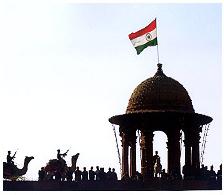Giving India the Power to Move Forward
The world continues to marvel at India's growth story -- and with good reason. The economy has delivered roughly 8% annualized jumps in gross domestic product over a three-year period that started in April, 2003. Indian stock prices are soaring. Savings and investment are at record levels. And though the Indian government confronts some real fiscal challenges going forward, a strong balance of payments surplus and some $140 billion in foreign exchange reserves provides a nice buffer against any conceivable external shocks such as a sudden slowdown in the global economy.
The real challenge, however, to Prime Minister Manmohan Singh's government's economic record really lies at home. India's dynamic growth numbers would even be more stellar if the country's archaic power grid and transportation infrastructure networks were brought up to snuff. India simply doesn't generate enough electricity to meet current demand -- a situation that is depressing growth.
Its highway system is also grossly underdeveloped. The country's ports are far less productive than those in China or Singapore. And the biggest complaint, by far, among foreign executives working out of India is the enormous difficulty of moving goods and parts around the country.
Power Play.
If India is going to advance to Chinese growth rates of about 10%, a goal set by India's Harvard-educated Finance Minister Palaniappan Chidambaram, and continue to improve the living standards of ordinary Indians, some real progress must be made. Many years of reduced funding from government, in an environment that simply did not facilitate private investment in critical infrastructure projects, has led to a huge mismatch between demand and supply in these sectors.India's latest budget for the new fiscal year sets out to change that. Total infrastructure spending on roads, ports, telecommunications, and power grids over the fiscal year that began on Apr. 1 is set to increase more than 20%. Money will be spent on, among other things, rolling out power connections in rural areas, five big power project contracts, road development, and a feasibility study for a deep-water port in West Bengal.
Given India's robust economic growth, now is the time to make such big-ticket investments. But money alone will not solve India's infrastructure woes in the long term. State governments, which wield plenty of political autonomy in India, have to loosen their grip on the infrastructure assets they control. For instance, due to heavy regulation at the local level, it is very difficult in India to develop an efficient national electricity power grid that would reallocate surplus in some regions to others facing shortages.
These reforms face enormous resistance from employees of state-owned power systems and consumer groups that feel threatened by economic reform. This could well prevent the good intentions in the budget from translating into action. India's government should somehow neutralize the resistance and ensure that state governments stay on the reform track.
Good Intentions.
Unfortunately, there isn't enough evidence of these control changes in the budget. As a consequence, even as the budget has succeeded in pointing in the right direction, it hasn't yet laid out the incentives necessary to get moving. One can only hope for the reforms to be put in place soon. If they're not, an otherwise robust and sustainable growth process could literally run out of power.India aspires to lift millions more of its citizens out of poverty, develop its manufacturing sector, and evolve into a 21st century economic power. It surely has the potential to get there. But short-term, it must focus on the essential business of making sure it has the energy, roads, and ports to do so.
- Subir Gokarn, Businessweek

0 Comments:
Post a Comment
<< Home